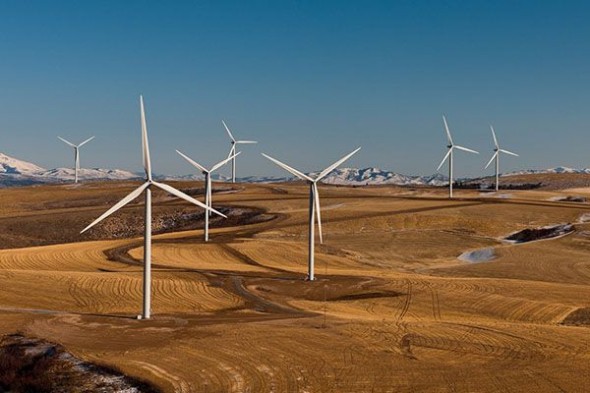Pacific Power Seeks Cost Recovery for Massive Wind Repowering Project
Posted on March 12, 2019 by Will Gehrke
Tags, Energy

2019 is looking to be a year of demolition and construction for Pacific Power. Since the early 2000s, Pacific Power has installed several wind farm facilities in Oregon, Washington, and Wyoming. But the company is now seeking to destroy and rebuild a majority of its wind facilities. According to Pacific Power’s most recent estimate, the wind repowering project is due to increase rates for residential customers by 2.73 percent. CUB is diligently reviewing this filing to evaluate the company’s argument for cost recovery on this investment.
As part of its comprehensive national energy policy, the federal government has been offering Production Tax Credits (PTCs) to newly built wind projects for several decades. Since ratepayers pay the federal taxes associated with utility operations, these PTCs are considered a benefit to customers. In order for a project to qualify for PTCs in 2020, the facility has to be in operation by the end of 2019.
Pacific Power’s wind repowering cost recovery case is a unique one for CUB. In a typical cost recovery case, the utility is building a new power plant or transmission line, or replacing one that is near the end of its useful life. I.e., most cost recovery cases reflect a resource need, either to replace lost power, or to add new capacity to the system. However, in this case, Pacific Power is tearing down functioning wind equipment and installing replacements that will increase production at the facilities. The equipment being removed could theoretically continue to operate for many years, and would produce an adequate generation mix for Pacific Power’s needs. But since the PTC is limited to the first ten years of a project’s life, the preexisting equipment is no longer eligible for tax credits. The new investment will qualify for ten additional years of PTCs and could be economically beneficial to customers. This is a textbook example of how economic incentives such as tax credits influence the economy.
The other quirk here is that this large capital project is not being reviewed in the context of a general rate case. CUB prefers capital projects to be reviewed in general rate cases because that format enables CUB to review the utility’s costs and pass the savings on to ratepayers. While this investment might push rates up, it may be offset by other costs that are declining. But CUB is unable to look for offsetting lower costs outside of general rate cases.
CUB supports utilities investing in renewable energy. Pacific Power’s power mix is primarily large coal generation facilities – the company needs to transition from coal to cleaner electricity generation. CUB is diligently reviewing this case to evaluate the economic analysis presented by Pacific Power, and we will keep our readers apprised of developments.
To keep up with CUB, like us on Facebook and follow us on Twitter!




03/11/19 | 1 Comment | Pacific Power Seeks Cost Recovery for Massive Wind Repowering Project